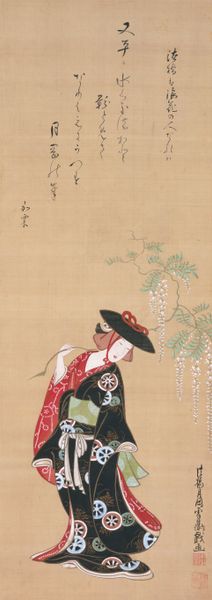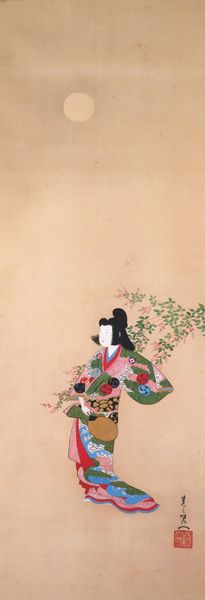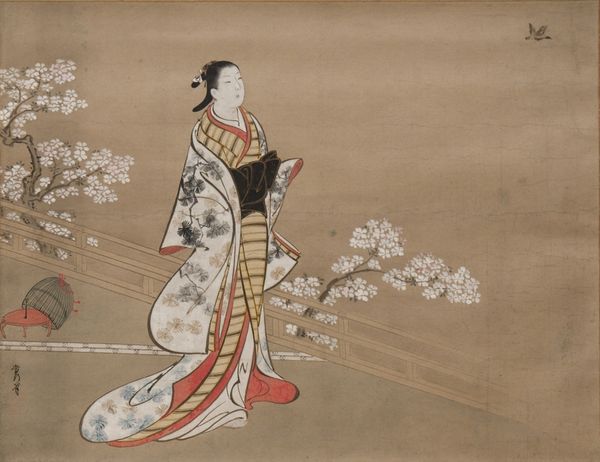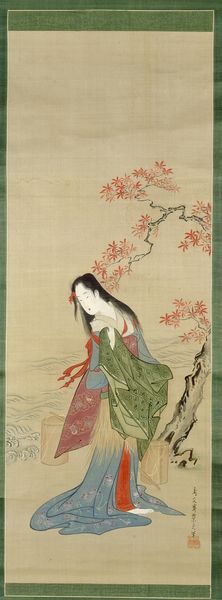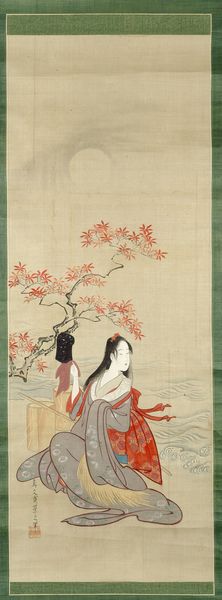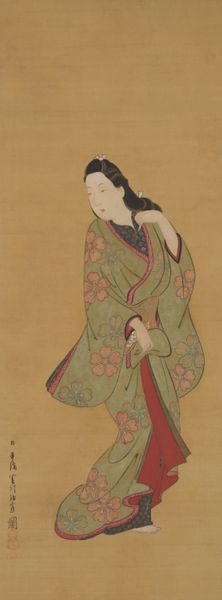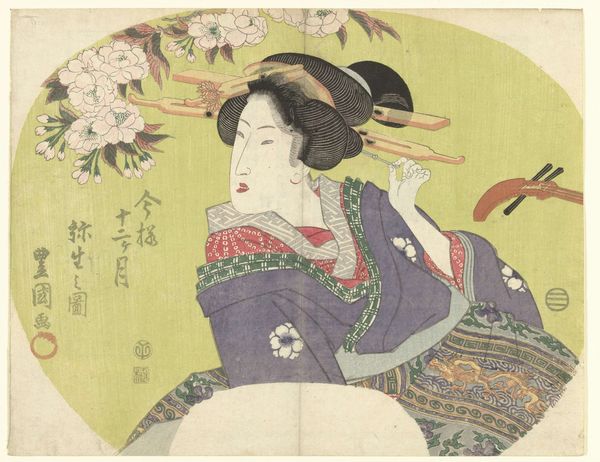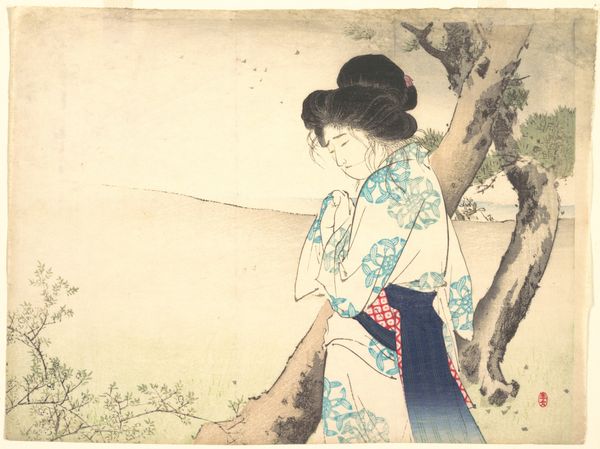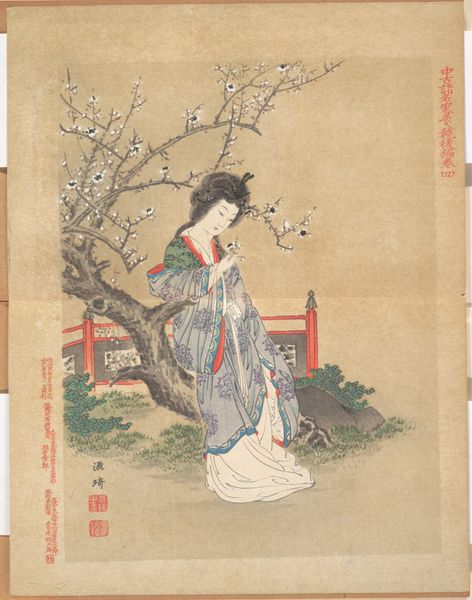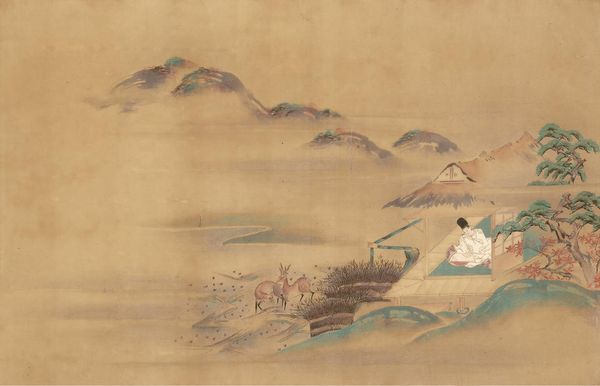
Wisteria Maiden and Demon Priest c. 1872
0:00
0:00
Dimensions: 43 1/8 × 13 3/8 in. (109.54 × 33.97 cm) (image)77 3/8 × 18 in. (196.53 × 45.72 cm) (mount)78 3/4 × 20 1/8 × 2 in. (200.03 × 51.12 × 5.08 cm) (mount, with roller)
Copyright: Public Domain
Kawanabe Kyōsai made this painting of a Wisteria Maiden and Demon Priest in the late 19th century, with ink and color on silk. Kyōsai worked during a fascinating period in Japanese history, as the country opened itself up to the West. As such, he had an interesting perspective, uniquely poised between the traditional art world and the new art institutions that began to appear. This painting is no exception. Its figures reference Japanese folklore and theater –– the maiden with the wisteria flowers, and the demonic priest beneath her. It’s important to remember the social context here. Japanese visual culture was changing rapidly, incorporating new western techniques, but in a unique, Japanese way. Kyōsai's art captures this cultural hybridity. To fully appreciate Kyōsai's work, we must delve into the cultural and institutional history of Japan during the Meiji era. By consulting historical records, theater archives, and the writings of art critics, we can gain a deeper understanding of this work and the complex interplay of tradition and modernity in Japanese art.
Comments
minneapolisinstituteofart about 2 years ago
⋮
This comical juxtaposition of the beauty and the beast pairs two popular characters from folk paintings sold as souvenirs. The Wisteria Maiden steps on the back of a demon priest to pull a branch of wisteria, ignoring his rapturous gaze and using him as no more than a footstool. This scroll was formerly in the collection of Josiah Conder (1789–1859), the “father of western-style architecture in Japan,” who became a pupil of Kyōsai.
Join the conversation
Join millions of artists and users on Artera today and experience the ultimate creative platform.
